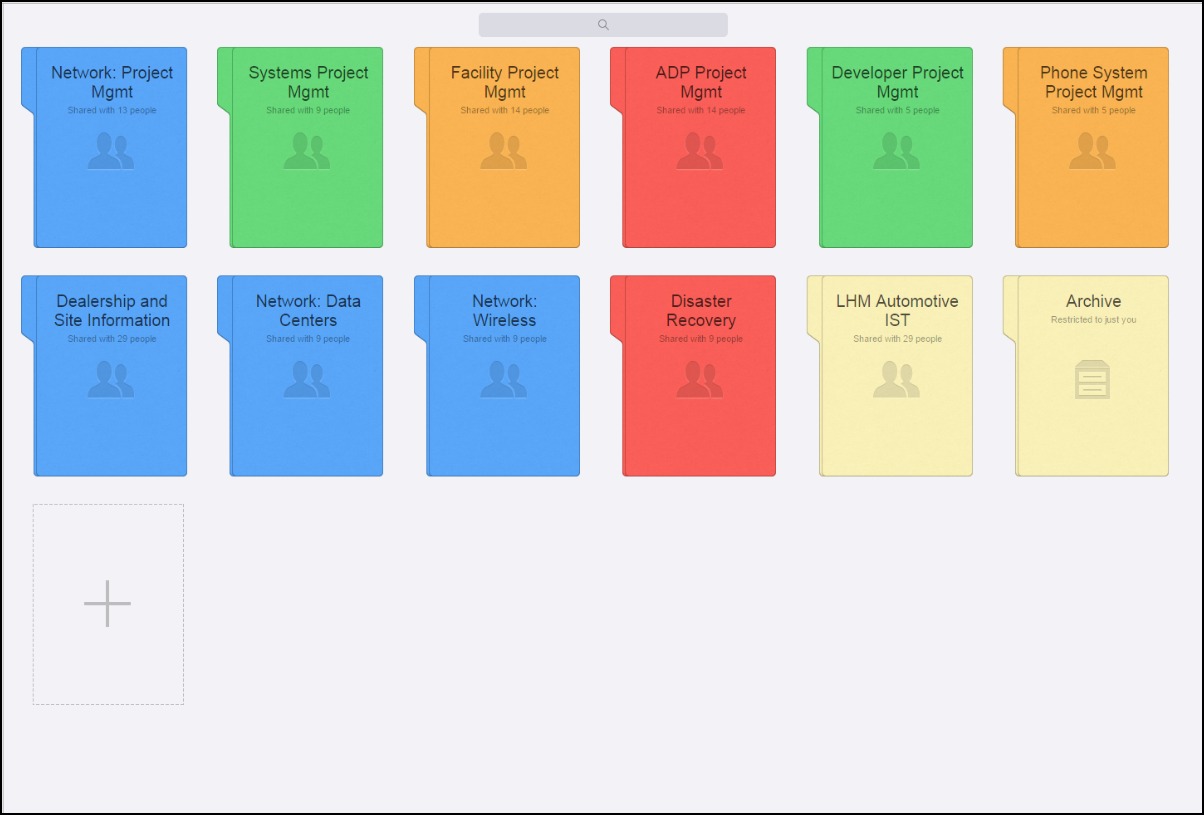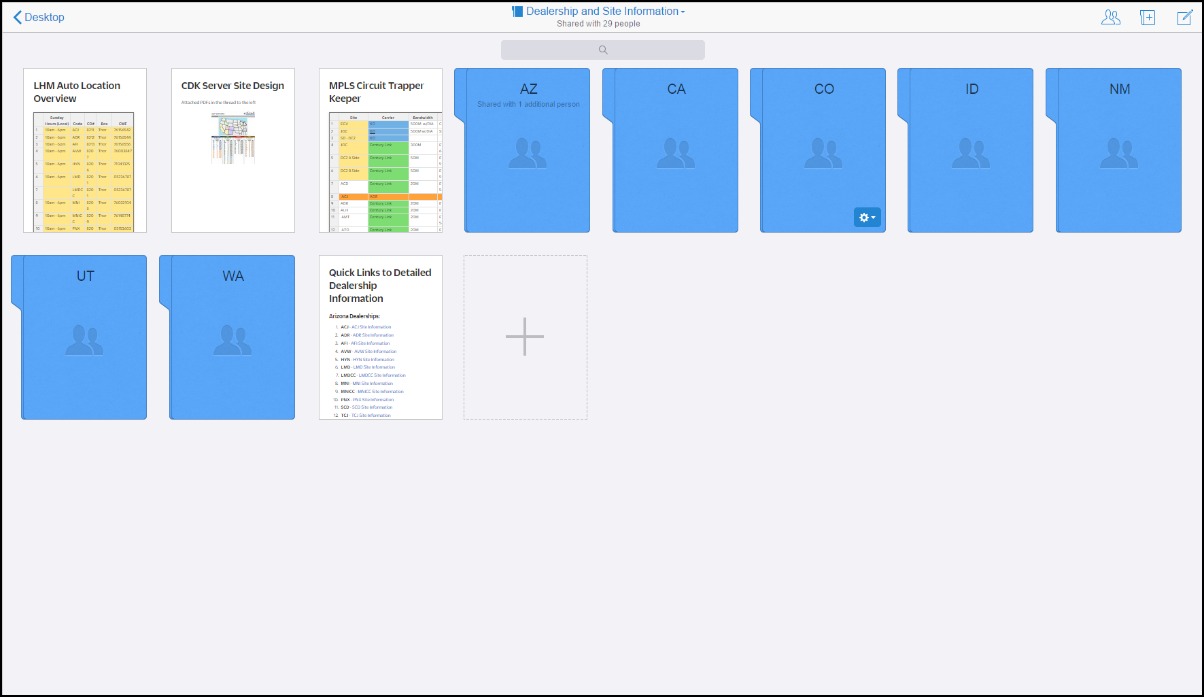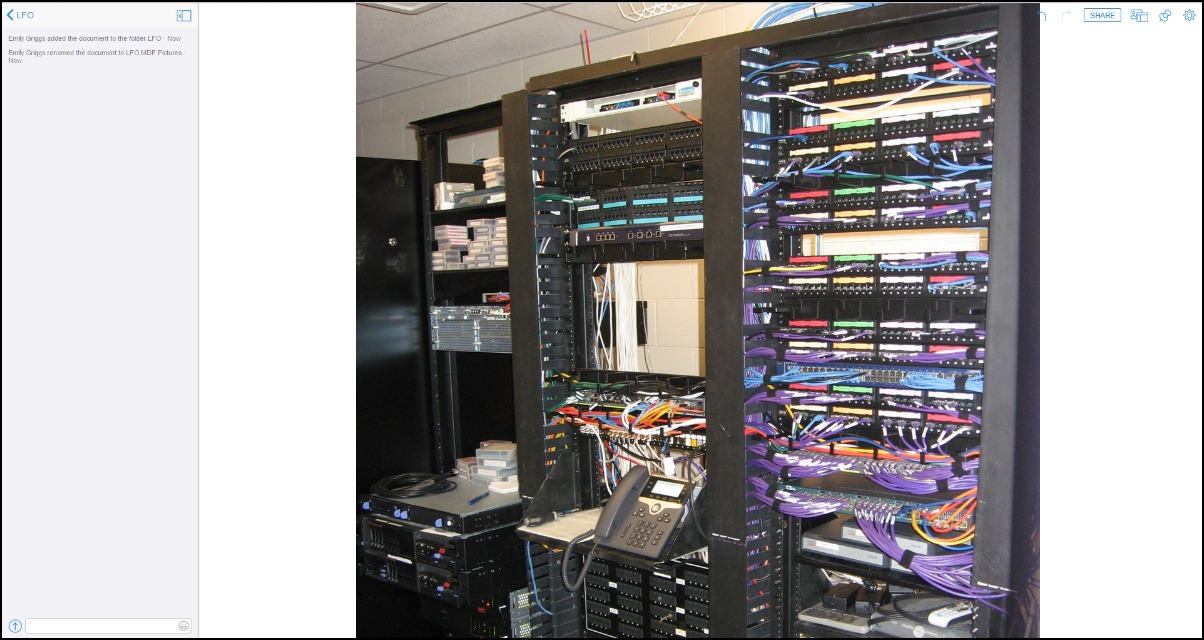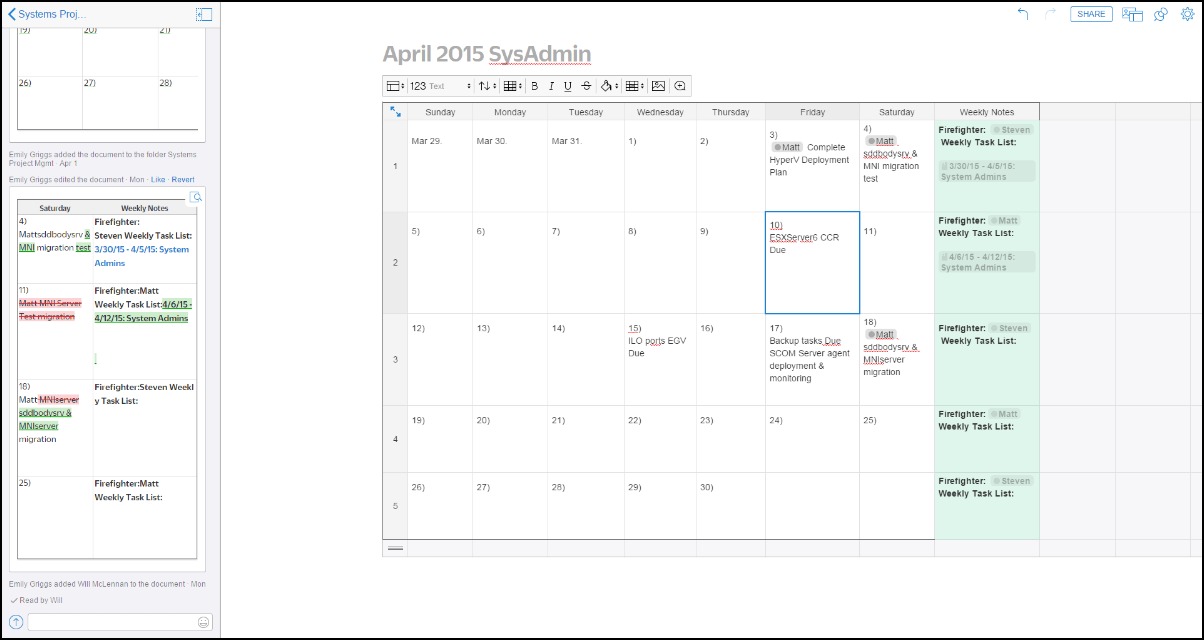
Starting as a single automotive dealership in 1979, the Larry H. Miller Holdings Group has expanded to over 80 businesses operating across 46 states. These enterprises include over 60 automotive dealerships, several sports teams including the Utah Jazz, various retail properties, movie theaters, as well as holdings in the financial, insurance, and real estate spaces.
With over 4,900 employees, the Larry Miller automotive division has substantial IT needs to keep the rubber on the road. They use Quip to keep their 30 person IT team connected across seven states. The team originally adopted Quip as a replacement for Evernote Business, but their usage of Quip has expanded to encompass everything from project management to team communication to a central team knowledge base.
Like many IT teams, LHM automotive IT group is made up of several teams, each with a specific area of expertise. It’s a huge organizational undertaking to ensure that all the members of each team are organized, available on call, and assigned to the correct tasks in order to fulfill the needs of all 60+ dealerships — this is the job of the IT Project Managers.
We chatted with two of these Project Managers, Bobbie Jensen and Emily Griggs. They explained how they use Quip as a central hub to facilitate fluid communication between all parts of the IT team both generally and for specific projects like a recent, massive company-wide email domain migration.
Quip as the Hub
The LHM team has been using Quip as a company intranet and communication platform for about a year. Before Quip, most documentation was created and stored in Evernote Business and communication was primarily through email. Quip has enabled the group to reduce the number of tools they use, and centralize communication throughout the lifecycle of the projects they work on. Emily explains, “Quip has really allowed us to collaborate. It’s been a knowledge base for us. It helps us create task lists, calendars, how-to guides. We have over 60 dealerships that we manage so we keep all of our detailed information in there about on-site contacts, circuits, network equipment, etc.”
The organization of the LHM IT intranet starts with a single shared folder that includes sub-folders for each team:

Everything the IT team has worked on for the last year is carefully organized. It enables them to have a complete archival knowledge base for all the projects they have worked on, any past SEVs and issues they have debugged, as well as basic information for every dealership.
Quip is also an essential tool for onboarding new members of the IT team. Field techs and project managers collaborate on how-to and troubleshooting guides that are used to train new hires. “Field techs will throw together some screenshots and describe how to fix something that you run into,” explains Emily. “It helps when we have new people come into the team to learn. If they run into something, we tell them to just search for it in Quip first.” New hires not only read the document itself, but also all of the messages about a particular project. Previously, that communication would have remained in everyone’s email inboxes. Now, new hires have full access to the history and context of the work that has been done.
Quip also serves as the central information repository for each dealership:

Each dealership and site has its own folder inside the main “dealership and site info folder”. Emily describes the typical contents of a dealership folder “We have the website, company numbers, router information, site contact information, and who our field tech is.”
Folders also contain photos of the network set up for each location. This makes it easy for field techs to reference the correct layout of the servers and routers for each location.

These photos and instructions make troubleshooting much easier. Field techs can see what each set up looks like, and can talk through problems with a dealership employee over the phone.
Quip as a Project Management Tool
The LHM IT team not only uses Quip as a central wiki, but also as their primary project management tool for assigning tasks and communicating between teams. Bobbie and Emily use Quip as a central repository to manage everything from weekly task lists and processes to large-scale operations like a company-wide email domain migration.
STANDARD WEEKLY PROCESSES
Quip is used to manage weekly operations like the change control procedure and IT on-call process. For example, the people on-call for a given week, dubbed “firefighters”, work from a Quip document that includes a list of what they have to tackle on a given week and the severity of each project — everything from minor bugs to server fixes that are crucial to the operation of the business. From the task list, conversations can happen throughout the week so everyone can collaborate and contribute to solving the company’s IT needs.
A calendar document is used to track who is on-call for a given week and what projects are coming up:

Another important procedure that now takes place in Quip is the change control process — the method of managing important operations like server updates or infrastructure upgrades. These requests are often crucial to the operation of a dealership and were previously conducted over email. With Quip, they are visible to the entire group which creates greater transparency about what is happening and any potential issues. Bobbie describes how a change request and approval works: “A field tech will make a request that says, ‘Here’s what I want to do. Here’s what it’s going to affect. Here’s the store or stores that it’s going to affect. Here’s my back up plan.’” She continues, “The change request provides all of the information that you would need to perform these big changes and then they either look at it and say, ‘Yes, go ahead and do that tonight,’ or ‘No, don’t do that,’” This approval process reduces the chances of complications because everyone involved has visibility. Quip has created a simple place for complete transparency, so everyone is always on the same page.
LARGE-SCALE PROJECT MANAGEMENT
The company-wide domain migration is an example of a large-scale project that was a huge undertaking for the entire IT team, particularly the project managers. The operation was a multi-phase process that lasted for over six months. It included migrating emails and user accounts for between 500 to 900 employees per week.
Email migrations are particularly complicated because email addresses are the main personal identifier for multiple other systems, so mistakes can cause an employee to be locked out of everything from their computer to internal databases. Additionally, there was a limited amount of time to conduct the migrations. Real-time communication was essential for each phase of the migration — enabling the team to communicate the status of each user and PC throughout the process.
Before Quip, this process would have been coordinated over email. The team learned that email caused a breakdown in communication because key people were left off threads by accident or someone would forget to reply to everyone. With Quip, Emily and Bobbie were able to facilitate clear communication from the beginning. They set up the foundational documents in Quip and had calls with every dealership to ensure that everyone was prepared for the migration.
The team also used Quip to keep track of all the hardware that needed to be switched over. Bobbie explains, “We kept track of all our PC’s. Every PC had to be touched in each dealership, and it was very helpful to have the spreadsheets in there so that when a PC was done, the field tech could just go in and check it off and say, ‘Yep, this one is finished. I’ve checked all of these things.’ rather than communicating through email”.
Continuing the Conversation
Managing the IT needs of a large company is already extremely complicated and spreading it out over 7 states and 60 sites only multiplies the complexity. For the Larry Miller IT team, simplicity and centralization are essential. Quip has enabled them to reduce the number of tools they use and ensure that everyone is on the same page. “Quip has completely changed how we work together and how we manage the team,” Emily summarized.
Original Article by Adam Van Fossen







